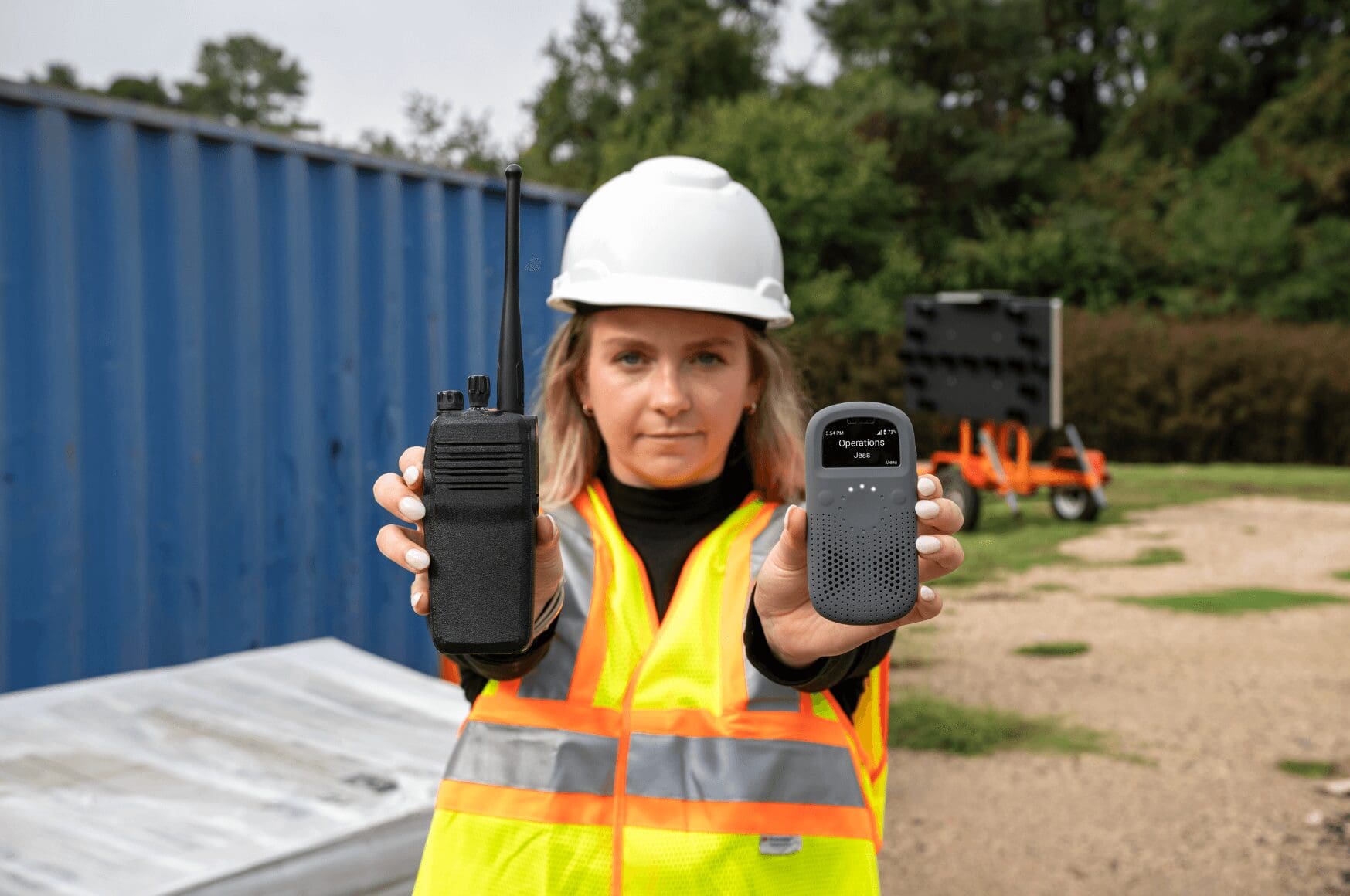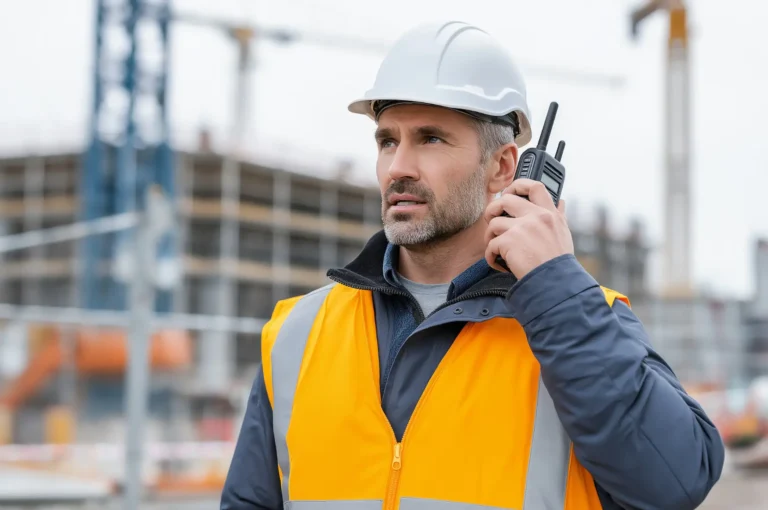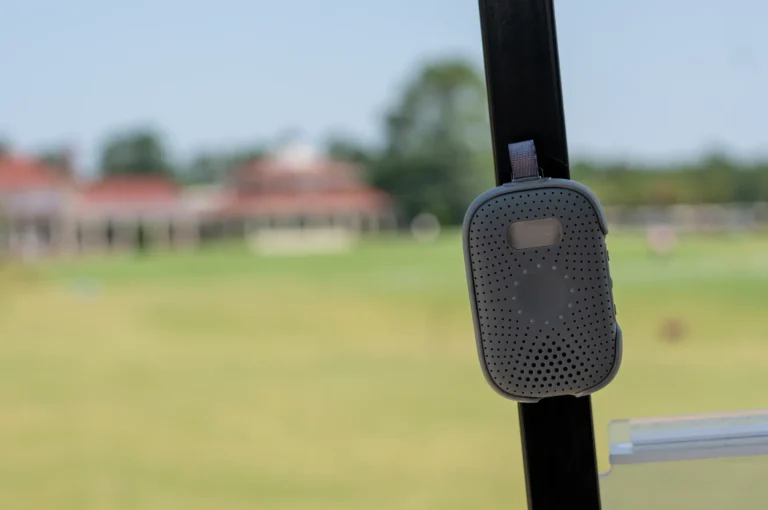Due to their versatility and reliability, walkie-talkies have been an integral communication tool for decades. Even with the introduction of technologies such as smartphones and cloud-based messaging, walkie-talkies remain a staple.
Known for their speed, clarity, and coordination, two-way communication devices are used for instant, reliable communication in various industries, from construction and manufacturing to hospitality and event planning. That’s why the landscape has evolved significantly in the wireless communication space.
The best walkie-talkie today looks very different from the bulkier two-way radios of the past. With long-range capabilities, weatherproof designs, and smart digital features, modern walkie-talkies alternatives have evolved significantly, catering to the needs of serious business use.
Whether you’re looking for the best walkie-talkie in 2025 or comparing popular models like Motorola, Cobra, or Midland, this guide helps you evaluate everything from signal strength to innovative features, ensuring your next two-way communication device fits your needs.

1. Long Range and Signal Strength
When it comes to business communication, range is essential. Whether you’re coordinating across a warehouse, managing a large venue, or working in remote areas, your walkie-talkie needs to reach. A long-range walkie-talkie typically reaches distances up to 9 miles, depending on terrain and signal interference.
Digital walkie-talkies typically outperform analog ones in this category, offering clearer transmissions over longer distances with less static. Models that use UHF (Ultra High Frequency) are better for indoor use (like warehouses), while VHF (Very High Frequency) performs better outdoors with fewer obstacles.
Even better, smart radios like Relay outperform traditional UHF and VHF radios, offering nationwide range through their redundant cellular and WiFi connectivity.
2. Battery Life You Can Count On
In fast-paced work environments, there’s no time to recharge or replace broken devices every few hours. Emergencies can happen at any point, and it’s integral that teams feel confident and comfortable using their devices. That’s why walkie-talkies with long battery life and rugged builds are necessary for serious business use.
When evaluating walkie-talkies, check walkie-talkie reviews to better understand how they are being used day to day. Prioritize models with 10–20+ hours of battery life and USB-C or multi-unit charging stations.
3. Weatherproofing and Durability
Weather should be a significant factor when choosing a device. Not all job sites experience great weather, and durability is not just a feature, but a necessity. Whether employees work outdoors, on a dusty construction site, or in unpredictable weather, their gear needs to keep up. That’s where weatherproof walkie-talkies play a significant role, ensuring your team is always prepared and resilient.
Look for dustproof, waterproof walkie-talkies with IP ratings like IP67 or higher. These devices can survive rain, mud, and even a drop into a puddle. Many walkie-talkies for construction are also drop-tested from multiple feet, with reinforced casings to handle daily wear and tear.
A waterproof, shockproof digital walkie-talkie is an investment, as it typically outlasts cheaper models in tough conditions, saving you from constant replacements.
4. Smart Features
Walkie-talkies aren’t scratchy and static like they used to be. Today’s best walkie-talkies offer a new world of features that enhance clarity, coordination, and safety.
Smart portable radios improve voice clarity, even in noisy environments. Some go further, offering GPS tracking for real-time location accuracy, and even live translation for multilingual teams. The walkie-talkie has evolved into a critical two-way communication device for the modern workplace.
These smart features have given the walkie-talkie a digital upgrade across industries such as emergency services and construction. Ultimately, these new evolutions ensure the right people get the right message without interference or delay.
5. Channel Customization and Interference Prevention
One of the most underrated features of a walkie-talkie is the ability to manage communication channels effectively. Regardless of the size of your team, channel crowding can quickly lead to confusion, missed updates, or crossed signals.
The best walkie-talkies for businesses allow custom channel setups, including private channels for supervisors, group channels by task or team, and emergency channels for quick incident response. This structure helps keep messages relevant and reduces noise from unrelated chatter.
When doing a walkie-talkie comparison, you’ll also want to decide between license-free walkie-talkies (which are easier to set up and use), licensed two-way radios (which can offer more privacy, power, and fewer chances of interference), and smart radios (which offer the best of both worlds).
6. Ease of Use and Accessories
Intuitive design ensures that teams get the most use out of walkie-talkies, particularly in high-pressure situations where there isn’t always time to think and react. The best models keep things simple: push-to-talk buttons placed for gloved hands, clear displays, and minimal setup steps so anyone can pick one up and get going.
Beyond the device itself, innovative walkie-talkie accessories can elevate your team’s workflow. Earpieces improve clarity in loud environments, belt clips keep radios accessible during movement, and multi-unit chargers ensure all devices stay powered without a tangle of cords.
If you’re evaluating walkie-talkie buying guides, don’t underestimate these extras. They can make a huge difference in day-to-day use, especially for fast-paced or physically demanding jobs.
Modern businesses need more than a basic two-way radio. They need affordable walkie-talkies and two-way communication tools that are durable, long-range, intuitive, and smart. From waterproof builds and private channels to GPS tracking and clear audio, today’s leading walkie-talkies go far beyond their analog ancestors.If your team needs an upgrade, consider Relay. It’s the next step in two-way communication—combining LTE + WiFi coverage, location tracking, emergency alerts, and real-time group coordination in one sleek, push-to-talk device.

FAQs
What are the best walkie-talkies for long range?
Traditionally, the best long-range walkie-talkies have combined high power output with access to UHF/VHF frequencies, with some models performing well in outdoor or wide-area settings. Now, smart radios like Relay use LTE + WiFi for even broader coverage without signal dropouts, allowing you to stay connected across locations.
What are the different types of walkie-talkies?
Walkie-talkies come in several forms, including analog and digital. Analog models are simple and affordable, while digital ones offer clearer sound and private encryption. There are also licensed and license-free radios. Licensed radios offer private channels and stronger signals, while license-free models are easier to get started with. For modern teams seeking private, affordable, and license-free devices, a smart radio can more effectively meet the needs of your modern team.
Can walkie-talkies be hacked?
Traditional analog walkie-talkies can be intercepted if someone tunes into the same frequency. Digital walkie-talkies can offer better privacy through encrypted channels. If data security matters, opt for secure, encrypted communication tools like Relay.
What are the benefits of using a walkie-talkie?
Walkie-talkies allow for instant voice communication in a simple-to-use device that’s typically more affordable and durable than cell phones. They improve team coordination and boost response speed, and are especially valuable in low-signal environments like warehouses, outdoor job sites, or large event venues.
How do I increase the range of my walkie-talkie?
To maximize walkie-talkie range, obstructions such as walls or hills may need to be minimized if your team is still using traditional radios. Select options, such as UHF radios for indoor use and VHF for open outdoor spaces, often fall short due to range restrictions. If range is a key consideration when choosing your next communication device, you may want to upgrade to a smart radio with LTE and WiFi connectivity to help eliminate range issues.







